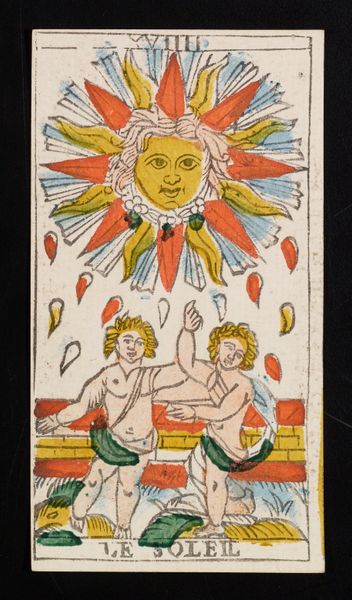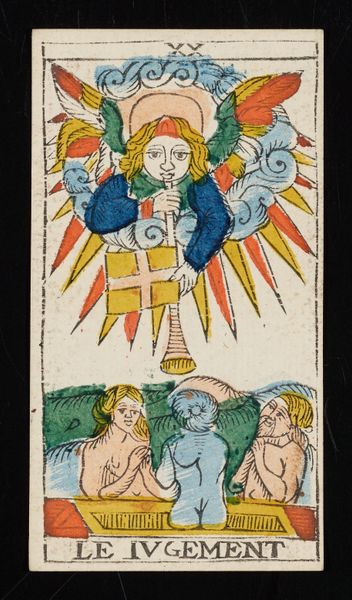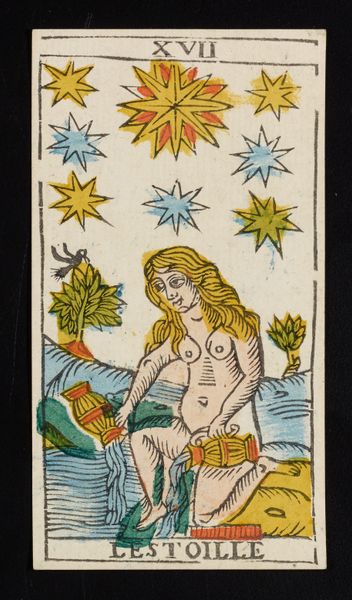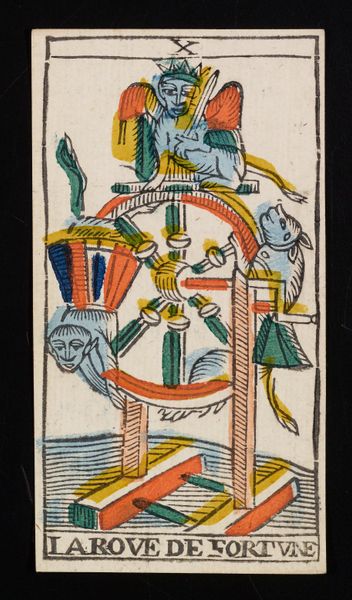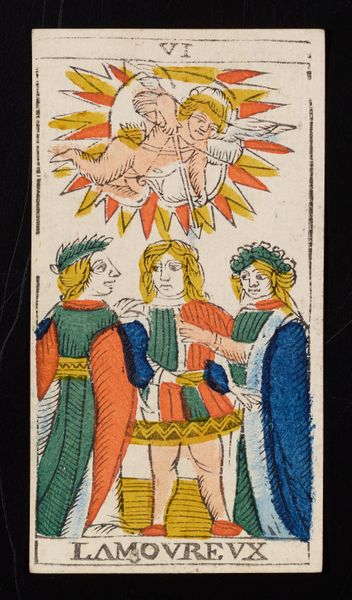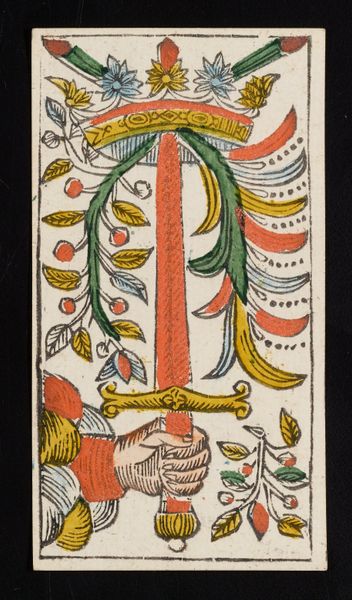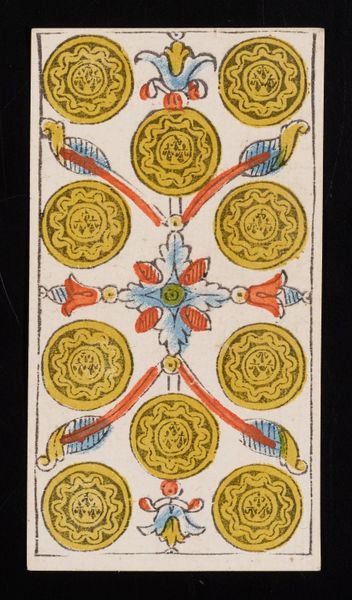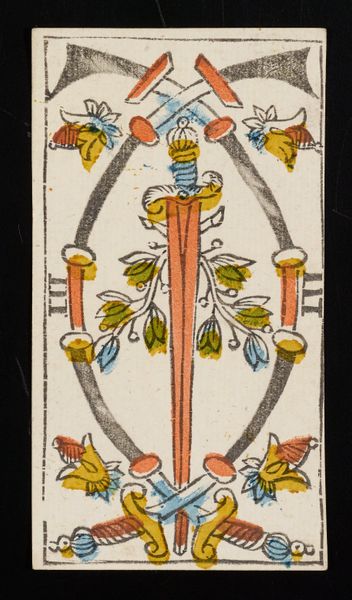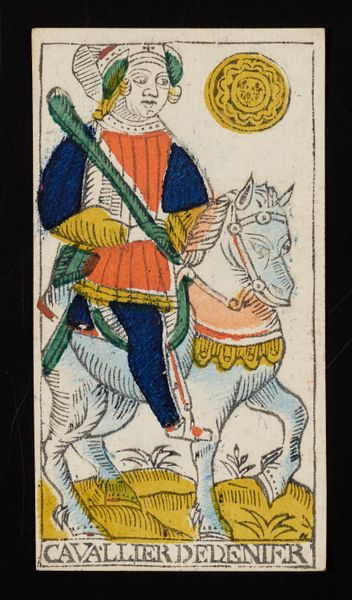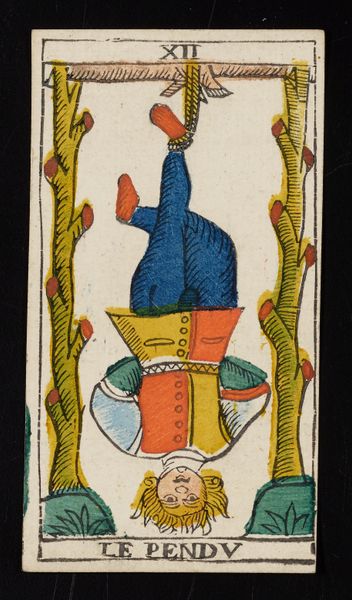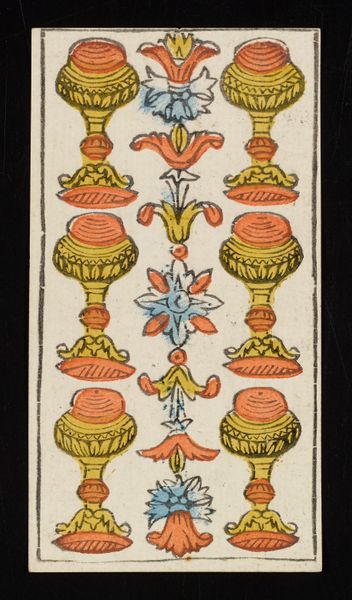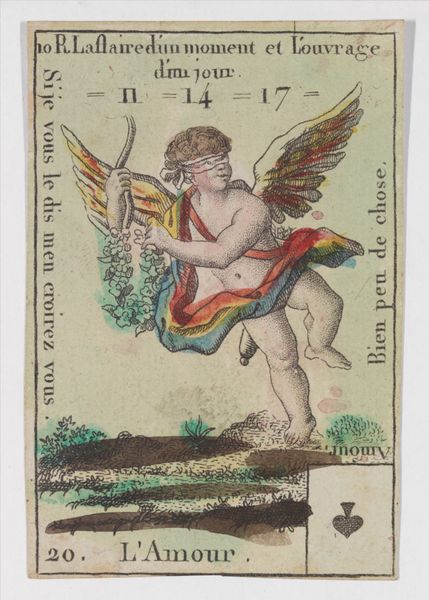
Dimensions: 4 7/16 x 2 7/16 in. (11.27 x 6.19 cm) (image, sheet)4 5/8 x 2 1/2 in. (11.75 x 6.35 cm) (sheet, each)
Copyright: Public Domain
Art doesn’t always have to be hung on the walls of a grand gallery. Some artworks are intended to be seen and used every day! In 1751, the Swiss playing-card maker Claude Burdel (1727-1799) designed 78 tarot cards. Tarot cards have a long and fascinating history. They emerged in the Italian courts of the fifteenth century as a form of fortune-telling. The cards came to be associated with spiritualism, magic, and the occult. This card represents ‘The Moon’ (La Lune), one of the major cards in tarot. It’s associated with intuition and hidden truths. The card encourages us to trust our instincts. Here, Burdel makes use of ancient imagery from folklore, as well as Egyptian symbols. He used a woodcut print to reproduce the cards, which were then coloured by hand. Just imagine the effort that went into creating each individual card! Which details strike you the most? Burdel has depicted a wolf and a dog howling at a moon with sixteen rays. The two creatures represent animal instinct, while the rays represent intellectual light. It’s almost as if the moon is symbolically illuminating our animal nature. Two pillars occupy the background, while a crayfish emerges from water in the foreground. Tarot is still common today, often used by people to help them make decisions and reflect on their life. This card emits a dreamlike energy which is intended to speak to our subconscious mind. Art doesn’t have to be stuffy or academic! ✨
Comments
No comments
Be the first to comment and join the conversation on the ultimate creative platform.
